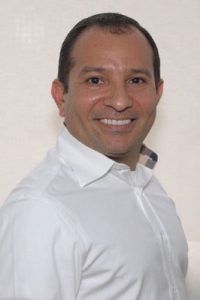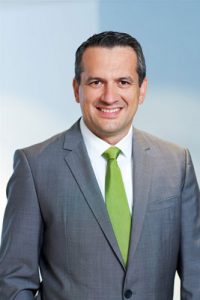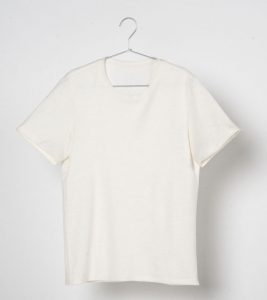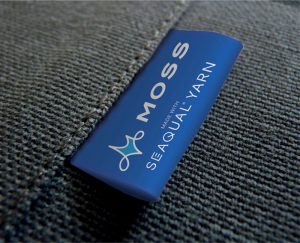METZINGEN, Germany — August 4, 2021 — Today, HUGO BOSS introduced its new 2025 growth strategy “CLAIM 5” and provides its mid-term financial ambition. Over the next five years, the company is fully committed to strongly accelerate top-line growth, claim its position in the consumers’ minds, and win market share for its strong brands BOSS and HUGO.
To deliver on its vision and ambition of becoming the premium tech-driven fashion platform worldwide, and one of the top-100 global brands, Hugo Boss introduces its CLAIM 5 strategy, which puts the consumer at the core of its business activities more than ever before. CLAIM 5 is based on five strong pillars: Boost Brands, Product is King, Lead in Digital, Rebalance Omnichannel, and Organize for Growth. It also includes a bold commitment to sustainability, together with a strong executional road map and a clear plan on empowering people and teams.
CLAIM 1 – Boost Brands
To strongly elevate brand relevance, the company is refreshing BOSS and HUGO — from logos over marketing, to brand new designs in retail and digital. As such, customers will experience both brands in a completely new look and feel. To become the leading power brands, it is the ambition to achieve around 2.6 billion euros in BOSS Menswear sales and to double BOSS Womenswear sales to around 400 million euros by 2025. This will be realized by enhancing the overall perception of BOSS as a lifestyle brand, increasing brand relevance, and strongly focusing on digital. The company also aims at driving around 800 million euros of sales for HUGO by building brand power, increasing brand awareness — with a dedicated marketing push — and driving geographical expansion. The company’s license business — covering a variety of products including fragrances, watches, and eyewear, among others — is set to contribute up to 200 million euros of revenues by 2025.
Two clearly distinguished marketing strategies — with a strong focus on digital as well as exceptional collaborations — are set to create excitement among consumers and unleash the full potential of BOSS and HUGO. Overall, incremental marketing spend will be more than 100 million euros between now and 2025.
CLAIM 2 – Product is King
With product at the center of its new strategy, Hugo Boss will create products to be worn 24/7 across all different wearing occasions. While casualization and comfort are key, Hugo Boss will strongly invest in its price-value proposition to ensure premium quality as well as high levels of innovation and sustainability. In doing so, the BOSS brand will foster its unique positioning in the premium/affordable luxury segment. To become the first touchpoint for younger consumers, the HUGO strategy builds on a broad range of commercial and contemporary pieces reflecting the authentic and unconventional HUGO style.
CLAIM 3 – Lead in Digital
Digital is key in ensuring a personalized omnichannel consumer journey. It is also enabling Hugo Boss to deliver on its vision to become the premium tech-driven fashion platform worldwide. The 2025 strategy therefore includes a strong commitment to further digitalizing the company’s business activities along the entire value chain, from trend detection and digital product development to AI-enabled pricing capabilities and the global rollout of digital showrooms. This also includes establishing a digital campus to further expand the company’s digital capabilities and to improve the consumers’ experience by leveraging data. The HUGO BOSS Digital Campus, based in Metzingen, Germany and Porto, Portugal, will strengthen the company’s online activities as well as analytical, technical, and executional capabilities. It extends Hugo Boss’ digital know-how with immediate effect by combining the company’s own expertise with that of experts on data execution. Overall, Hugo Boss will step up its investments into digital by more than 150 million euros by 2025.
CLAIM 4 – Rebalance Omnichannel
To translate brand power into all consumer touchpoints, Hugo Boss will rebalance its distribution footprint and strongly accelerate its omnichannel activities in the years to come. In this context, the company aims at ensuring a seamless brand experience across all consumer touchpoints. Boosting its digital revenues to more than 1 billion euros by 2025 will be a key element in this regard, and enable Hugo Boss to grow its digital penetration to a level between 25 percent and 30 percent of Group sales. The company’s digital ambition includes a strong commitment to all digital touchpoints – from its own website hugoboss.com to its online partner businesses, including digital pure players, leading marketplaces as well as bricks and clicks.
Hugo Boss will also unleash the full potential of retail as it aims at growing brick-and-mortar retail revenues to around 2 billion euros by 2025. Growth will be driven by an increase in store productivity of around 3-percent per year, as well as the further optimization and refreshing of the company’s global store network. In this context, around 80 percent of own stores are set to be refurbished during the next three years already, with overall investments into brick-and-mortar retail targeted to total around 500 million euros for the period until 2025. Hugo Boss also intends to increase brick-and-mortar wholesale revenues to a level of around 1 billion euros by 2025. The company is fully committed to reclaiming its position in this important channel by strengthening existing partnerships and regaining market share in key product categories.
CLAIM 5 – Organize for Growth
Hugo Boss will drive growth across all geographies while further balancing its global footprint. In Asia/Pacific, revenues are set to grow at a low-teens compound annual growth rate (CAGR 2019-2025). As a consequence, the region’s revenue share will grow to more than 20 percent within the next five years. Mainland China will continue to be of particular importance, with the company putting a strong focus on the Chinese consumer also in the years to come. HUGO BOSS is equally committed to fostering its leading position in premium apparel in Europe, where sales are forecast to grow at a low- to mid-single-digit rate per annum (CAGR 2019-2025). Key markets such as Germany, the United Kingdom, and France are all set to strongly contribute to growth by unleashing their full potential in retail, reclaiming wholesale with strong partners, and driving digital growth across all consumer touchpoints. In the Americas, revenues are projected to grow at a mid-single-digit CAGR between 2019 and 2025, as the company will strongly push the 24/7 brand image by fully leveraging the casualization trend in the important U.S. market.
‘Organize for Growth’ also means leveraging the company’s existing operations infrastructure as the future platform for speed and growth. Hugo Boss will therefore foster modular and digital product creation, continue to shorten lead times, increase flexibility in production and logistics, as well as push digitalization to further increase the overall efficiency and flexibility of its supply chain. By 2025, the Company aims at creating more than 90 percent of its products digitally while it also works towards reducing end-to-end lead times by around 30 percent.
At the same time, Hugo Boss will intensify its sustainability efforts to deliver both meaningful and measurable impact as well as emotional engagement with the consumer. The company’s ambitious sustainability targets include the aim for climate neutrality within its own area of responsibility by 2030 and throughout the entire value chain by 2045. In addition, Hugo Boss will put particular emphasis on establishing an end-to-end circular business model. In this context, the company aims to enable eight out of ten products to become circular by 2030.
“Our ‘CLAIM 5’ strategy is a clear vision for the company with the consumer at its core — helping to enhance the consumer journey, improve our product offering, increase our relevance, and drive growth across all geographies,” says Daniel Grieder, CEO of HUGO BOSS AG. “Our aim is to grow Hugo Boss in a fast but sustainable way, and I am confident that we have the right team and strategy to successfully execute and lead our Company into the future.”
2025 Financial Ambition
With its new strategy, Hugo Boss aims to double sales to 4 billion euros by 2025, which implies a strong CAGR of 16 percent taking 2020 as the base year, and 6 percent as compared to the pre-pandemic level of 2019. To successfully deliver on its strategy, Hugo Boss will step-up investments into its products, brands, digital capabilities, as well as its global store network, all aimed at fueling industry-leading top-line growth. Consequently, over the next five years, value creation will shift from driving relative margin improvements to delivering strong top-line growth, absolute profitability improvements, as well as superior free cash flow generation.
Until 2025, gross margin is forecast at a level of between 60 percent and 62 percent, reflecting product investments to enhance the price-value proposition and fuel top-line growth. At the same time, Hugo Boss is confident of returning to a strong EBIT margin of around 12 percent by 2025, translating into an EBIT CAGR of 6 percent between 2019 and 2025. Investments into the business will be compensated for by leveraging operating overheads as well as strong efficiency gains to be realized by optimizing the company’s global store network. The latter relates to ongoing relocation and rightsizing initiatives, selective store openings and closings, as well as rent renegotiations. Driven by the significant top- and bottom-line growth, Hugo Boss will generate substantial cumulative free cash flow between now and 2025. Improvements in trade net working capital and the smart and efficient use of capital expenditure will provide further support to free cash flow development. The majority of cumulative free cash flow — around EUR 2 billion until 2025 — will either be reinvested into the company or distributed to shareholders through regular dividend payouts. In this context, the company’s payout ratio until 2025 will be in a range of between 30 percent and 50 percent of net income attributable to shareholders.
Posted August 4, 2021
Source: HUGO BOSS








